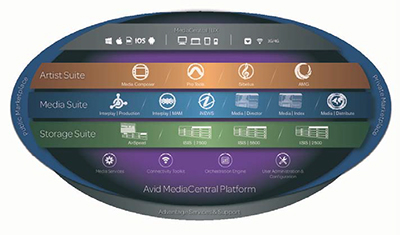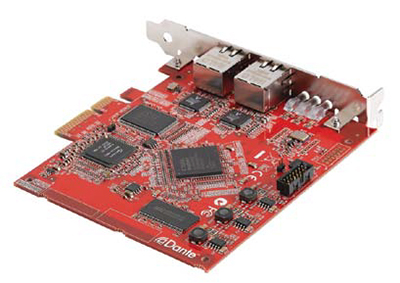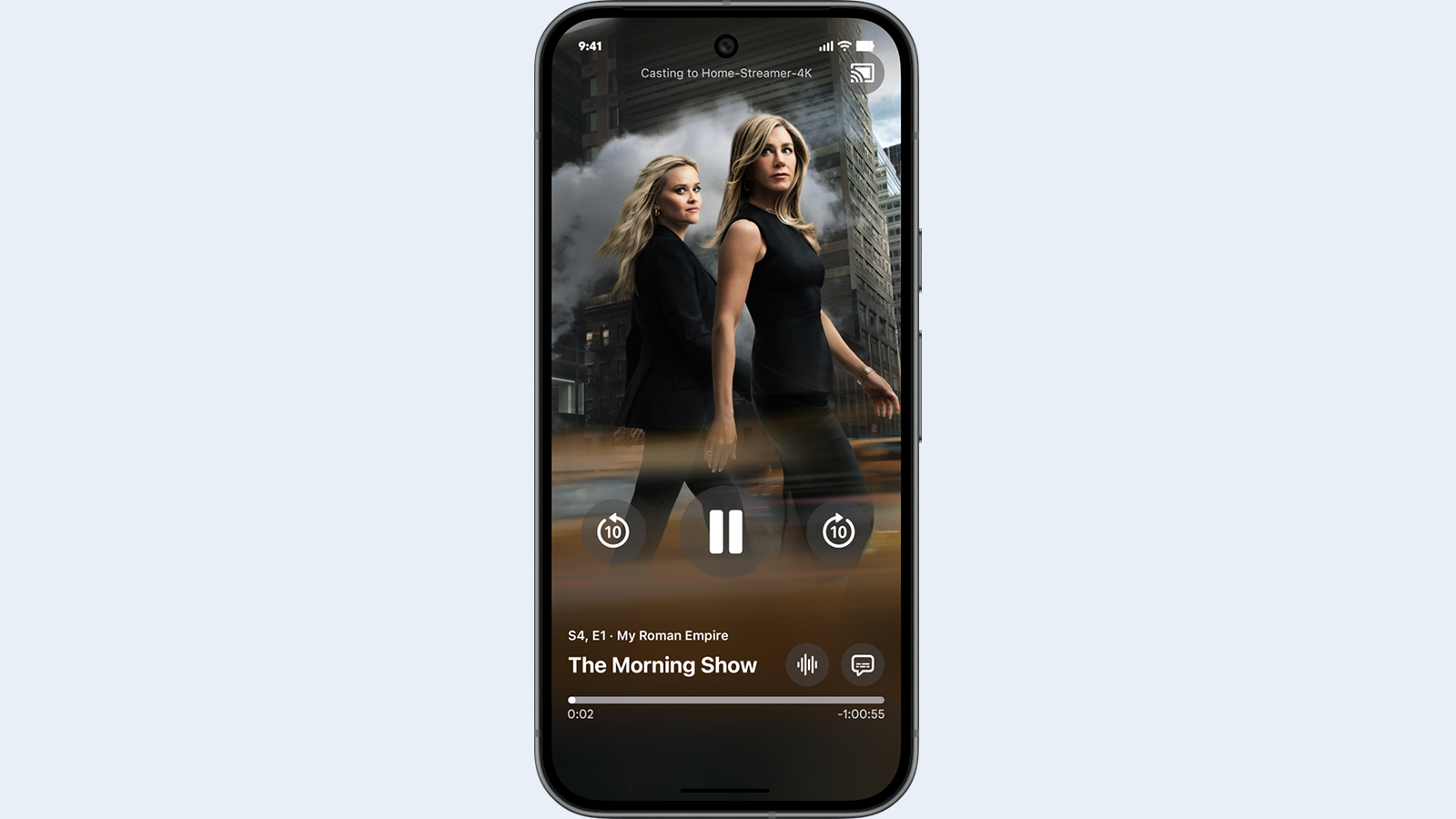In this episode of “Inside Audio,” we’ll look at the most important topics from Avid Connect, the DTV Audio Group meeting, and the 2014 NAB Show, the three events that drew me to Las Vegas this year for what I’m now calling “NAB Show Week.”
The NAB Show itself has become so busy with meetings that it is almost impossible to see everything in all the exhibit halls, not to mention the offsite vendor locations. Fortunately, all three of these events turned out to be worth the time invested and valuable information was learned in each of them.
AVID CONNECT
Avid Connect started off with meetings of the new Avid Customer Association (ACA) Advisory Councils, followed by an introduction of the Avid Everywhere platform. Then it moved to breakout sessions for Audio Everywhere, Broadcast Everywhere and Video Everywhere.
Fig. 1: Avid Everywhere stack diagram

The Avid MediaCentral platform is comprised of a lot of component pieces including the Artist Suite, which contains Pro Tools, Media Composer and Sibelius, the Media Suite for asset management and distribution and the Storage Suite.
Supporting these suites is MediaCentral, which provides collaboration and administration. Connectivity comes from MediaCentral UX, which is designed to distribute to pretty much every computing platform and over practically any Internet connection. Finally there are the public and private marketplaces and service and support.
The Audio Everywhere breakout sessions were primarily centered on Pro Tools and the new collaboration features in the application. Pro Tools may be the component of this platform most ready for rollout because it contained collaborative features in a past life. Avid introduced DigiDelivery in Pro Tools 7 to send files between users, but after just a few years the technology was sold and the features were removed from Pro Tools. Collaboration has returned to the program and thanks to faster Internet speeds it may finally be a useful part of session workflow.
The professional video industry's #1 source for news, trends and product and tech information. Sign up below.
The demos, all running in Pro Tools 11 were only pseudo-remote since both participants were in the same room. Collaboration can take place in non-real-time, near real-time or real-time and will partly depend on network speed and bandwidth. So to minimize bandwidth hogging, users can share only the tracks or stems needed for the session. Any plug-ins needed for the shared session can be purchased or rented from the built-in store and then downloaded, installed and activated while the session is open.
To dismiss concerns about plug-in or system compatibility, audio routed to aux tracks can be committed or frozen, then shared. Other real-time collaboration features include text and video chat, with review and approval done by streaming high-quality audio from the session to whatever device the approver is using. Once the session is complete it can be posted to the private or public Avid marketplace for distribution.
The new platform also comes with the announcement that, starting with Media Composer, new pricing models will be available, including subscriptions, floating licenses and full license purchases. In addition, the company is opening up the platform to third-party developers through publication of an API/SDK and they promise to be more open to customers and the industry as well.
For instance, the new PXF session format shuns company branding and is instead named the “Production Exchange Format.” The advisory councils are made up of customers that represent a cross-section of the user base and are charged with helping the company set future direction. Avid appears to be taking steps to address the changing marketplace as well as how it relates to customers, but only time will reveal whether the company is committed to making these changes work.
DTV AUDIO GROUP
The DTV Audio Group meeting is always an interesting event with lively discussions from people working on the bleeding edge of audio for television.
This year’s meeting included presentations on IP audio infrastructure for the 2014 World Cup, AES67 adoption followed by an audio-over-IP interoperability panel, audio for the Sochi Olympics, a 3D audio case study and an overview of advanced music delivery formats.
The discussion I found most interesting was on object-oriented audio. While there was some discussion of immersion, virtually everyone on the panel agreed that when object-oriented audio does arrive it will be to deliver personalization and solve regulation-related issues first.
For instance, rather than riding the coattails of the primary language broadcast, alternate language voice or descriptive audio services could simply replace the primary language while maintaining the full surround image. Value-added services such as director’s commentary could accompany a movie or television program.
Driving all of these new capabilities and services will be more robust metadata than we currently have and it seems unlikely that any system with so many options and channels could function without it. There were some concerns expressed about this new technology including whether broadcasters will be willing to spend money on these new services and whether production of content containing them can be done affordably.
NAB SHOW
When I finally made it to the NAB Show I found an encouraging trend taking shape through the widespread adoption of the AES67 Audio-Over-IP interoperability standard. It seemed to be everywhere and it was a pleasure to see.

Yamaha Nuage accelerator card Dante, Ravenna and LiveWire, although competing technologies, have all announced AES67-compatibility and manufacturers are hopping on board as a result.
One of the most surprising developments regarding AES67 was Calrec’s announcement that they are partnering with Ravenna after holding off to see if audio-over-IP was going to catch on. Joining the Ravenna camp along with Calrec are Digigram, with their PCIe card; and Telos, with a compatibility mode for LiveWire. We also saw AES-67 compatible audio gear from Wheatstone with the Dimension Three and Series Four consoles.
New additions to the Dante partners include Studio Technologies, who introduced the new Model 214 announcer box; and Yamaha, with their Nuage accelerator card.
There are still some audio-over-IP technologies that are not AES67-compatible, but it was nice to see so many of the major manufacturers are now supporting the standard.
It will be interesting to see how these technologies and issues fare between now and the 2015 NAB Show Week.
Jay Yeary is a member of the Avid Products and Solutions Council, the DTV Audio Group, and AES working group SC-02-12. He can be reached through TV Technology or via Twitter at @TVTechJay
